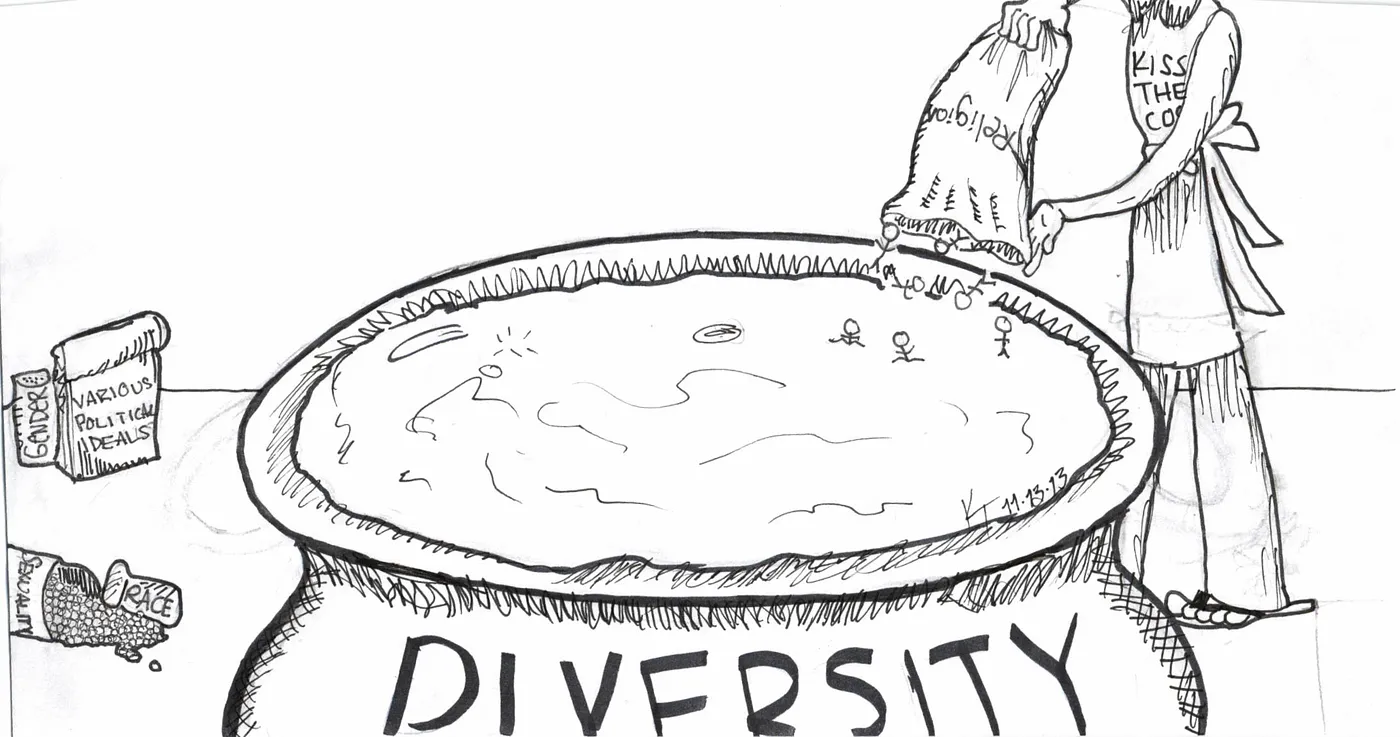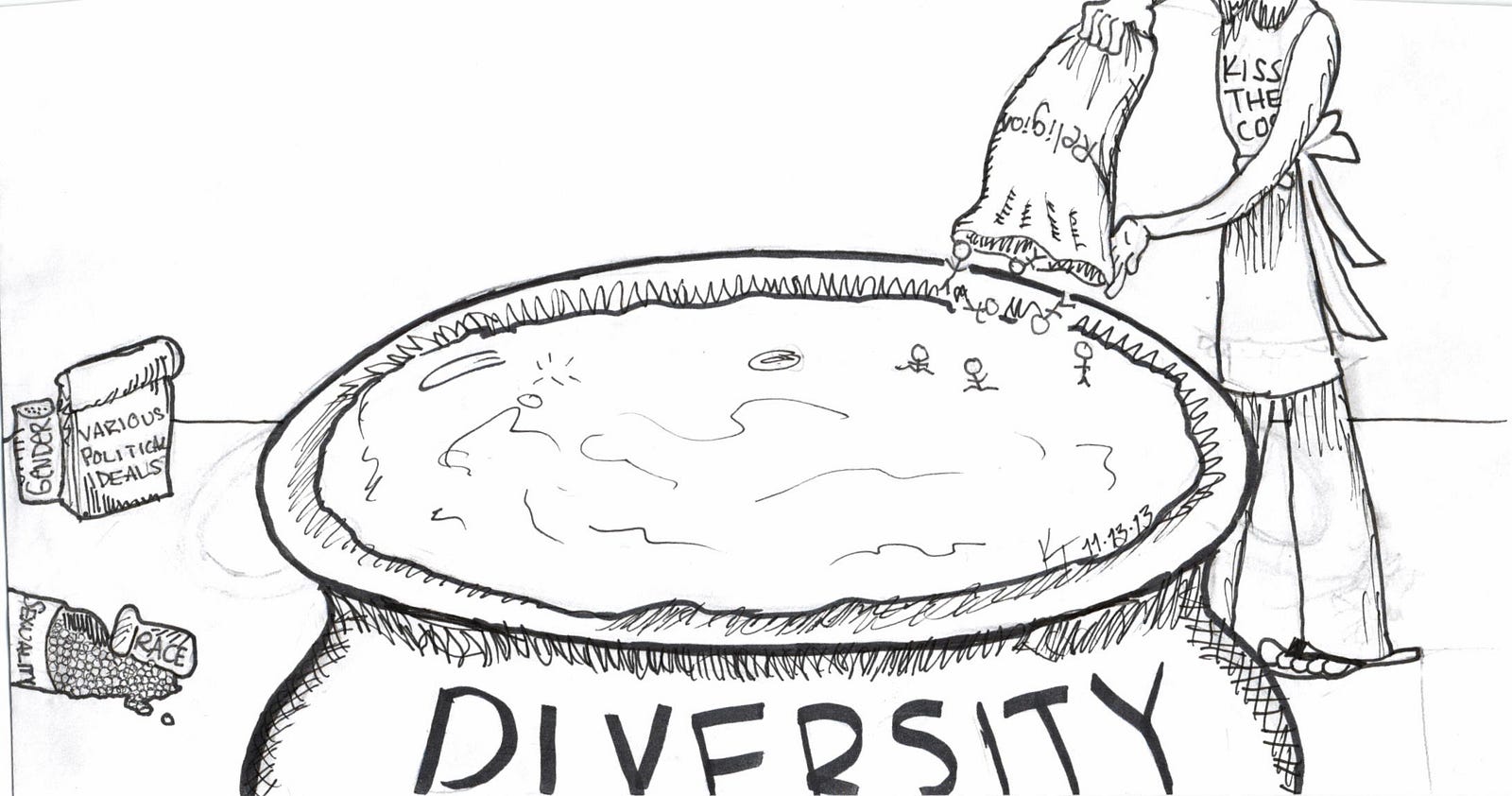The Melting Pot of Diversity
 CodeChef-VIT
CodeChef-VIT
A Management Angle

When we think diversity and management, what is the first thing that pops into your mind?
You’re probably thinking of people from different religions or races.
What is Diversity Really?
Most people think of different races, religions, and genders when it comes to diversity. But, is this the true essence of diversity?
Diversity, in a nutshell, means variety. From a management angle, it is the ability of groups to think along various tangents, generate unique ideas efficiently, and get different perspectives on the same thing. There are several misconceptions on diversity, which hamper true diversity, and reduce its benefits.

Diversity should not be treated as a burden, but a blessing. Instead of just fulfilling the diversity quota or trying to meet societal expectations, you should treat diversity as a way to obtain people with distinct approaches to thinking. These people should have the ability to create their own niche in your organization.
Management in a true Sense
When people think of management, people usually think of a rigid structure of command, with an employee having a boss, who in turn has a boss, and so on. This is the autocratic method and is only effective in certain scenarios.
Some bosses include their employees in the decision making process. This is called the participative method of management. When the boss assigns a task to the employee and trusts him/her to get it done in whatever way they wish, this is the delegative method.
The two methods mentioned above have one thing in common- They do not follow a rigid structure of command, but include everyone in the decision making process, to some extent. In the end, the final decision is in the hands of the leader, but these strategies help him/her generate new ideas and get fresh perspectives.

Organizations need to figure out what they require, and implement management methods accordingly. Management usually refers to the act of getting things done in the most efficient manner, by planning and successfully implementing ideas. Being good at management usually requires you to inspire your associates or employees to greater heights. This can be done in multiple ways, from leading by example to incentivizing work.
How Diversity and Management Go Together
Now integrating the two concepts together, the essence of diversity in management lies not on the race, religion, economic status, or gender, but on the diversity of the different minds working together. That being said, diversity is usually catalyzed by having different races and genders, because of the difference in their upbringing. The thought process leading to spontaneous generation of ideas, unique solutions, and out of the box methods is what organizations look for.

Usually, people with different backgrounds have different approaches to problems. For example, a person from India might produce efficient ideas to work for most people, whereas a person from the United States might produce ideas with the maximum profit in mind. There is a tendency for people from similar backgrounds to think in a similar fashion. When you are able to get people with different mindsets in your organization, you will have achieved a true ‘Melting Pot of Diversity’.
Is Diversity Worth It?
Is diversity always beneficial? No! Diversity can lead to negative effects such as:
Poor communication and reduced teamwork
Resentment amongst individuals or groups
Conflicts
Exclusion of people
However, Diversity can have many benefits:
Better problem-solving capabilities
Unique, out-of-the box solutions
Different perspectives, leading to innovation
Increase in profits and/or productivity
In most cases, the benefits of diversity outweigh the negative effects and it is usually a good idea to implement diversity.
Implementing Diversity

As a leader, you need to decide the best for your organization. Diversity in management has a significant effect on any organization. Therefore, it is important for the organization (and by extension its top brass) to recognize its needs and choose the level of diversity required accordingly. You need to weigh all your options carefully and meticulously examine all the pros and cons of diversity, before coming to a decision. You can then, based on requirement, decide the types of people you need.
For example, an organization that requires new ideas and solutions periodically, such as an advertisement company, would benefit tremendously if they have diversity in their ranks. On the contrary, an organization that needs to get specific tasks done, such as ed-tech companies, would be better off having people from similar backgrounds to optimize communication.
It is important to have diversity, but it should be tailored according to the scenario. It falls on you to strike the perfect balance and concoct the perfect recipe to obtain the ‘Melting Pot of Diversity’!
Subscribe to my newsletter
Read articles from CodeChef-VIT directly inside your inbox. Subscribe to the newsletter, and don't miss out.
Written by
